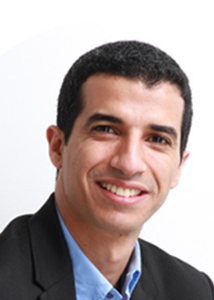
Investigator:
Abid Oueslati, PhD
Name of Institution:
Laval University (Université Laval, Québec)
Project Title:
Targeting Early-Stage Alpha-Synuclein Aggregation for Parkinson’s Disease Therapeutics
Uncovering how toxic protein clumps first form in Parkinson’s disease to find new ways to stop the disease at its roots
Investigator Bio:
Dr. Abid Oueslati is a Full Professor in the Department of Molecular Medicine at Laval University and Director of the Molecular and Cellular Neurodegeneration Laboratory at the CHU de Québec–Université Laval Research Center in Québec City, Canada. He is also a member of the steering committee of the Neuroscience Axis at the research center and serves on the Scientific Advisory Boards of both Parkinson Canada and the Alzheimer Society of Canada.
Dr. Oueslati holds a master’s degree in neurobiology (2004) and a PhD in neuroscience (2008), jointly awarded by Université de la Méditerranée Aix-Marseille (France) and Université de Tunis El Manar (Tunisia). Following his doctoral studies, he completed a postdoctoral fellowship at the Brain and Mind Institute of the École Polytechnique Fédérale de Lausanne (EPFL) in Switzerland, under the supervision of Dr. Hilal A. Lashuel (2008–2014). In 2014, he joined Laval University, first as an Associate Professor and then as an Assistant Professor in June 2015, before being promoted to Full Professor.
Dr. Oueslati leads a dynamic research program focused on understanding the role of protein misfolding and aggregation in the development of neurodegenerative diseases. His work specifically investigates the molecular mechanisms that govern the aggregation and toxicity of the protein alpha-synuclein, a key player in Parkinson’s disease (PD). By combining molecular biology, cell biology, and in vivo experimental models, his research seeks to uncover new targets and strategies for disease-modifying therapies that could prevent or slow the progression of PD and related disorders.
Objectives/Background:
In PD, a protein called alpha-synuclein (aSyn) forms toxic clumps known as Lewy bodies that lead to the death of brain cells. Current treatments targeting these clumps after they form have had limited success. Our strategy is different: we aim to stop aggregation before it begins. We have developed a system to monitor aSyn as it converts from its normal form into a toxic one. Our recent findings identified proteins that interact with aSyn and may help its clumping. We will test whether blocking these helper proteins can prevent aSyn aggregation at its earliest stages, protect brain cells, and halt disease progression.
This project aims to uncover how aSyn starts forming harmful clumps and identify the cellular machinery involved, with the goal of blocking this early process and preventing toxic aggregate formation.
Methods/Design:
Using a gene-editing tool called CRISPR-Cas9, we will selectively switch off genes that produce proteins that help aSyn clump together in human brain cells grown from stem cells. We will identify which protein or combination of proteins, when blocked, can prevent aSyn clumping and reduce the damage it causes to nerve cells. We will then focus on the most promising proteins, those whose removal leads to the greatest reduction in aSyn clumps. We will study how these proteins interact with aSyn and explore ways to block this interaction with drugs, with the goal of translating these findings into future treatments.
Relevance to Diagnosis/Treatment of Parkinson’s Disease:
Although the formation of harmful aSyn clumps is central to nerve cell damage in PD, strategies that try to remove these clumps have not worked well. In this project, we focus on preventing aSyn clumping early on. By stopping the clumps before they form, we aim to develop new treatments that can slow down or even halt the disease before it causes serious damage. This innovative approach targets a root cause of PD and offers hope for better, disease-modifying therapies that could improve the lives of patients in the future.
